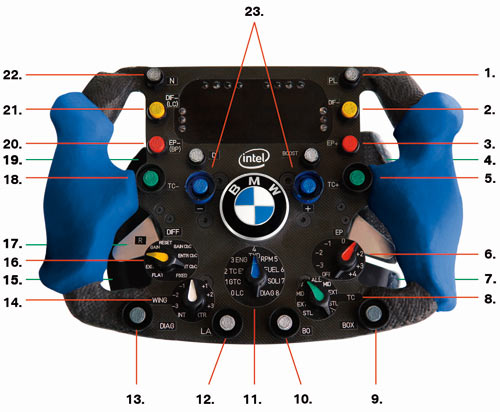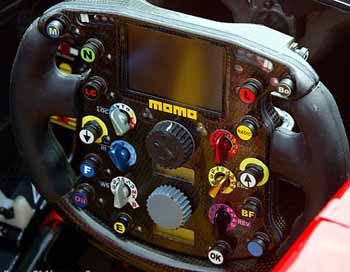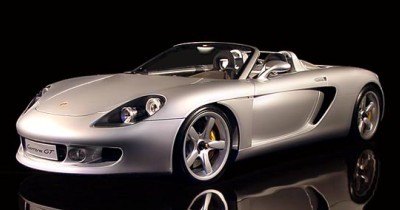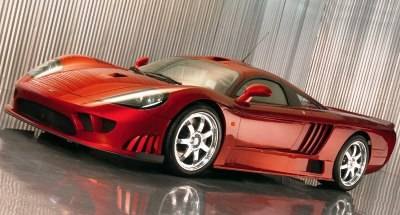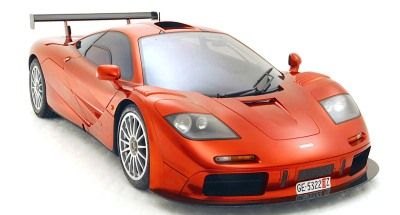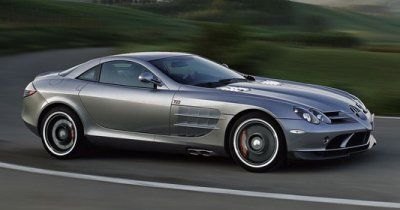PowerBass L-6502 - Fullrange System Roundup
Taking A Listen To The PowerBass L-6502
 Power Bass L-6502
Power Bass L-6502
MSRP: $89.95
PowerBass went the extra mile to make a set of speakers that really stands out. The first thing I noticed was my reflection in the polished black, advanced-injection Zirconium polypropylene cone. Flipping the driver over I caught an eyeful of the stamped steel basket that was brushed to look stainless and clearcoated for protection. It holds the PowerBass insignia in two of its legs, as does the rubber motor boot. Even the thick, high-gloss sticker at the rear of the motor is stylish. Impressive... so far.
The aluminum hard-dome tweeter sits on a static pole in the center of the driver. As a crossover, it uses a subpar electrolytic capacitor for a -6dB highpass while the woofer rolls off naturally. Interestingly, the woofer uses a 3-ohm voice coil, probably for efficiency reasons, so make sure your amplifier can handle the impedance if you're wiring multiples. Also be aware that the frame is of the 165mm variety so it may not drop into the factory speaker holes in some vehicles.
The manual is very thorough, but the illustrations were a little difficult to understand. The system comes with speaker grilles, wire, a cutout template, and a couple of stickers if you'd like to flaunt your PowerBass purchase.
Listening
Overall, I was rather pleased with the response of the L-6502's. Tonally, the system remained pretty linear throughout its usable frequency range, and its bass output was average. That alone is enough to satisfy most consumers. However, if you are, or aspire to be, an audiophile, there were some areas I felt could use some improvement. The pianos in Coldplay's "Clocks" seemed to upset the tweeters which would create a buzzing overtone to the notes. I also noted a bit of sibilance to Phil Collins' vocals, and less than perfect imaging. Each of these is likely related to the poor choice of tweeter crossover I mentioned prior. That being said, most of us don't fit the critical audiophile category, and I can only conclude that the PowerBass L-6502 is an excellent sounding set for the money.
| SUBJECTIVE SCORE CHART |
| Points Possible | PowerBass L-6502 |
| Sound Quality | 5 | 3 |
| Treble | 5 | 3 |
| Midrange | 5 | 3 |
| Bass | 5 | 2.5 |
| Value | 5 | 4 |
"Average" is half points possible
Additional sizes: 4", 4x7, 5.25", 6.75", 6x8, 6x9
Morel Integra Ovation XO 6 - Fullrange System Roundup
Taking A Listen To The Morel Integra Ovation XO 6.

Morel Integra Ovation XO 6
Unconventional Yet Stunning
MSRP: $599.95
Morel is to the mobile audio industry what Porsche is to the automotive market. It might seem like a bit of a stretch to compare these two brands, but when you look at the overall picture it's quite clear. Like Porsche, Morel has an expansive array of performance products to fit the needs of its customer, ranging from modestly priced to the extreme. Both companies also build products outside of the box, using less-than-conventional designs that yield stellar results. Yet regardless of price and design, both Porsche and Morel preserve signature traits in each of their products that make them stand out in their respected fields.
For this review, Morel sent a product that's certainly unconventional in mobile audio. The Integra Ovation XO 6 is what is referred to as a point source system. Although it could be viewed as a coaxial since each speaker consists of a tweeter and a woofer, and the similar attachment point of the tweeter placing it within the woofer's cone, point source speakers carry a fundamental difference. Whereas the tweeter in a coaxial speaker sits above the cone up on a standoff typically originating from the center of the woofer's voice coil, the tweeter in a point source speaker is recessed so that its diaphragm is aligned with the woofer cone, thereby creating a single point of origin for sound to be reproduced. This speaker alignment, along with a phase correct crossover, virtually eliminates time domain errors that are a byproduct of the speakers being offset from each other. In other words, the speakers perform as one transparent unit.
The Integra Ovation XO 6 is built on Morel's aluminum die-cast Uniflow basket used by many of the company's high-end components. Mechanical energy for the woofer is supplied by an internal hybrid motor structure employing a pair of neodymium magnets, used to motivate the oversized 2.1-inch aluminum Hexatech voice coil (honeycomb-shaped wire that reduces air gaps in the windings, thus increasing efficiency). The voice coil, via its aluminum former, attaches to a composite cellular fiber cone that's terminated at the edge by a high-loss rubber surround.
Seated within the leading edge of the woofer's voice coil former is the tweeter. It sports a 28mm (1.1-inch) Acuflex-coated soft dome and is powered by its own neodymium motor. Out front it employs a controlled dispersion cup surrounding the dome, which should help maintain phase linearity and control any negative interaction from the woofer cone (particularly while it plays lower frequencies).
Clarion SRQ1630R - Fullrange System Roundup
Clarion SRQ1630R
MSRP: $199.99
Taking it up a notch, Clarion enters the fray with a multi-axial 3-way system. Instead of a single tweeter sitting out front, the SRQ1630R uses a 3/4-inch silk-dome midrange and a 5/16-inch dome tweeter to complement the woofer. While the main driver is said to be a 6.5-incher, its large mounting flange requires it use a slightly smaller cone than others in this group. The cone is derived of TM-MIPP (titanium metallized mica-injected polypropylene), which gives it the look of brushed titanium. Holding everything together is a generic-looking stamped steel basket with multiple mounting holes that Clarion claims to be GM fit. Clarion also provides a pair of adapter plates designed to fit Chrysler vehicles, wire, and a pair of two-piece grilles (these can be mounted with or without the wire mesh) in case you decide to make your own mounting provisions.
The manual? Well, let's just say Clarion was nice enough to supply some information on the outside of the packing box, which includes speaker specs, a mounting template and a non-descript wiring diagram. The only paperwork you'll find inside pertains to the warranty and product registration.
Listening
I kicked off my listening with "Everybody" by Raul Midon and followed it up with Toni Braxton's "Shadowless." Being similar-both use only the vocalist and guitar(s)-it was no surprise that I noted the same compromises with each artist, resulting in their upper frequency range being too airy, and the guitars tended to be a bit bright sounding. However, with Coldplay, the piano had surprising realism, and the guitar and bass really came to life with volume, even if a little thin at times. I also found the bass transients to be good with tracks such as "Boxenkiller," and pretty much anything that had bangin' percussions. In general I wasn't floored by the tonal linearity of the system, but the SRQ1630R proved to have good clarity and substantial bass response. Above all, I didn't find myself fatigued after my listening session, a trait that speaks for itself. At $200, they're pushing the envelope between price and performance, so take a listen to them and others before you commit.
| SUBJECTIVE SCORE CHART |
| Points Possible | Clarion SRQ1630R |
| Sound Quality | 5 | 3 |
| Treble | 5 | 3 |
| Midrange | 5 | 3.5 |
| Bass | 5 | 3.5 |
| Value | 5 | 2.5 |
"Average" is half points possible
Additional sizes: 5x7, 6x8, 6x9
[+/-] read more...
[+/-] back...



























